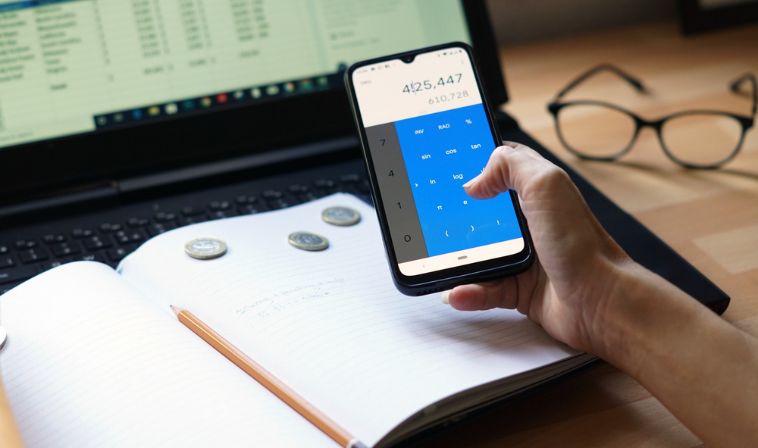How To Track Business Expenses: Tips To Try Out
15 July 2025
5 Mins Read

toc impalement
Operating a business involves spending money constantly—on supplies and equipment, travel, software, and even sometimes snacks for the crew. But businesses can’t simply whip out a wallet and pay for everything like individuals do in everyday life.
They require a wiser, more structured means of dealing with payments, particularly when more than one individual is part of it.
Most businesses have a system to keep their expenditures in check. They use the systems to monitor where they spend their money, who spent it, and why.
Without planning, things quickly turn chaotic. That is why companies utilize specific tools to control their expenses and ensure everything remains transparent.
How To Track Business Expenses? Day By Day
Suppose a small business has five employees working together. Each one may need to purchase something—perhaps a train ride, lunch with a customer, or more supplies to bring to the office.
It would be confusing if everyone paid themselves and then requested payment back. It’s difficult to keep up with receipts, and errors occur.
Business charge cards tend to be reserved for business purposes alone and frequently call for the entire balance to be paid each month.
This prevents businesses from accumulating long-term debt while still allowing their groups the flexibility to cover whatever they must.
Using charge cards also makes it easier to track spending. Each purchase is recorded, and many cards come with built-in tools that sort expenses into categories—like travel, food, or office supplies—automatically.
- Establish a business bank account to keep track of your finances.
- Choose a system for accounting like dedicated software or spreadsheets.
- Automate and integrate your bank account with the software.
- Record and review your expenses.
- Manage all your receipts and invoices properly.
Why It’s So Important To Track Business Spending?
Companies can’t risk trying to estimate how much they’ve spent. If the figures are out, even slightly, it might lead to major issues.
Perhaps the firm spends too much and finds itself short of cash. Or perhaps it remembers to leave one cost out and makes less profit than anticipated.
That is why tracking is crucial. Managers and business owners have to know where the money is going. By tracking expenditure on a regular basis, they can identify patterns.
They may realize that spending on travel is too excessive or that a certain subscription is no longer being utilized.
It also makes life easier come tax time. Companies need to account for how much money they made and spent, and staying organized saves time and hassle. If expenses are already categorized, there is no rummaging through receipts or searching for old charges.
Who Spends Business Money?
Typically, only specific individuals in a business can make expenditures on behalf of the business. This varies according to company size and how it’s structured.
In a small firm, perhaps just the owner and one other individual have access to a card or payment account.
Larger businesses may have more staff who can have their own cards or accounts to deal with particular types of expenditure.
But even if several people are permitted to spend, there often are limitations. There may be a budget established for a company’s departments or projects. This ensures that no one spends over their limit.
Some of these products even permit companies to establish spending limits per card so employees can’t overspend accidentally.
Having definite rules ensures everyone is on the same page. It also ensures that company funds are spent only on business expenses.
What Happens After A Purchase?
When someone at the company makes a purchase, the second thing to do is report it. This could be uploading a photo of the receipt, typing in a short summary of what the purchase was for, or selecting a category of expense.
Most expense tracking programs and charge card systems simplify this step. Some even send reminders to staff members to enter receipts or authorize a charge. That way, nothing gets misplaced or overlooked.
After all the recording is done, someone—often a manager or finance individual—goes through the expenses.
They verify each charge was permitted, makes sense, and aligns with the firm’s plan. This process helps catch errors and keeps expenses in check.
Tools That Make It Easier (And Smarter) To Spend

There are many tools that help with business spending. Some designs are for expense tracking, while others are integrated into the company charge cards or bank accounts. These tools typically allow how to track business expenses:
- Establish limits for various teams or projects
- Receive real-time alerts when someone spends
- Automatically categorize and label expenses
- Have all receipts and notes in one location
When used effectively, these tools save time and prevent issues. They also provide business owners with a clear idea of where the money is going—which makes it simple to plan.
Spending Smarter Helps The Business Grow
When a company has a clear process for how it spends its money, everything goes more smoothly. Teams can have what they need without the approval every time.
Owners can monitor costs without reviewing every single detail personally. And most importantly, there are fewer surprises at the end of the month.
A savvy spending system also assists in making decisions. When the company is aware of how much it’s spending on stuff, it will make more informed decisions. Perhaps it’s time to reduce travel or spend more on gear.
But only if the facts are correct do those decisions pay. Companies that are careful with spending tend to be better at saving, budgeting, and expanding over the long term.
How To Track Business Expenses: The Main Idea
Companies invest money constantly—but they don’t invest it willy-nilly. They have tools and systems in place to keep things distinct and managed.
That includes selecting the appropriate payment mechanisms, monitoring what’s being spent, and establishing limits so teams don’t overspend.
Tools such as business charge cards help streamline payments, particularly when there is a lot of individual involvement.
If everything is monitors correctly, it keeps the company on track, prevents errors, and makes intelligent decisions with finances.
Whether a business is small or large, overseeing spending in the proper manner is one of the most vital aspects of keeping everything going smoothly.

















